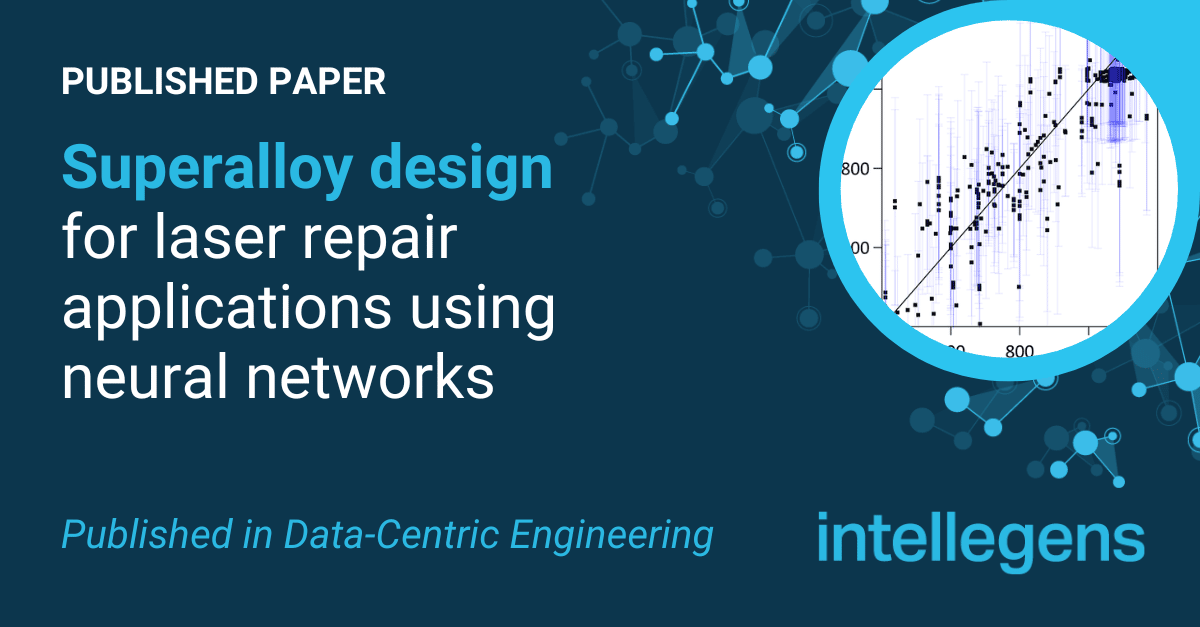Paper published in Data-Centric Engineering
A new paper in Data-Centric Engineering has applied machine learning to propose a new superalloy for additive manufacturing applications, which was subsequently experimentally-validated. Intellegens CSO Dr Gareth Conduit is a co-author, along with collaborators at the University of Cambridge, University of Sheffield, and Rolls-Royce.

Abstract
A neural network framework is used to design a new Ni-based superalloy that surpasses the performance of IN718 for laser-blown-powder directed-energy-deposition repair applications. The framework used a large database comprising physical and thermodynamic properties for different alloy compositions to learn both composition-to-property and also property-to-property relationships.
The composition with the highest probability of satisfying target properties including phase stability, solidification strain, and tensile strength was identified. The alloy was fabricated, and the properties were experimentally investigated. The testing confirms that this alloy offers advantages for additive repair applications over standard IN718.
Publication details
Published in: Data-Centric Engineering 3, e30 (2022)
Title: Design of a Ni-based superalloy for laser repair applications using probabilistic neural network identification
Authors: Freddie Markanday, Gareth Conduit, Bryce Conduit, Julia Pürstl, Katerina Christofidou, Lova Chechik, Gavin Baxter, Christopher Heason and Howard Stone.

